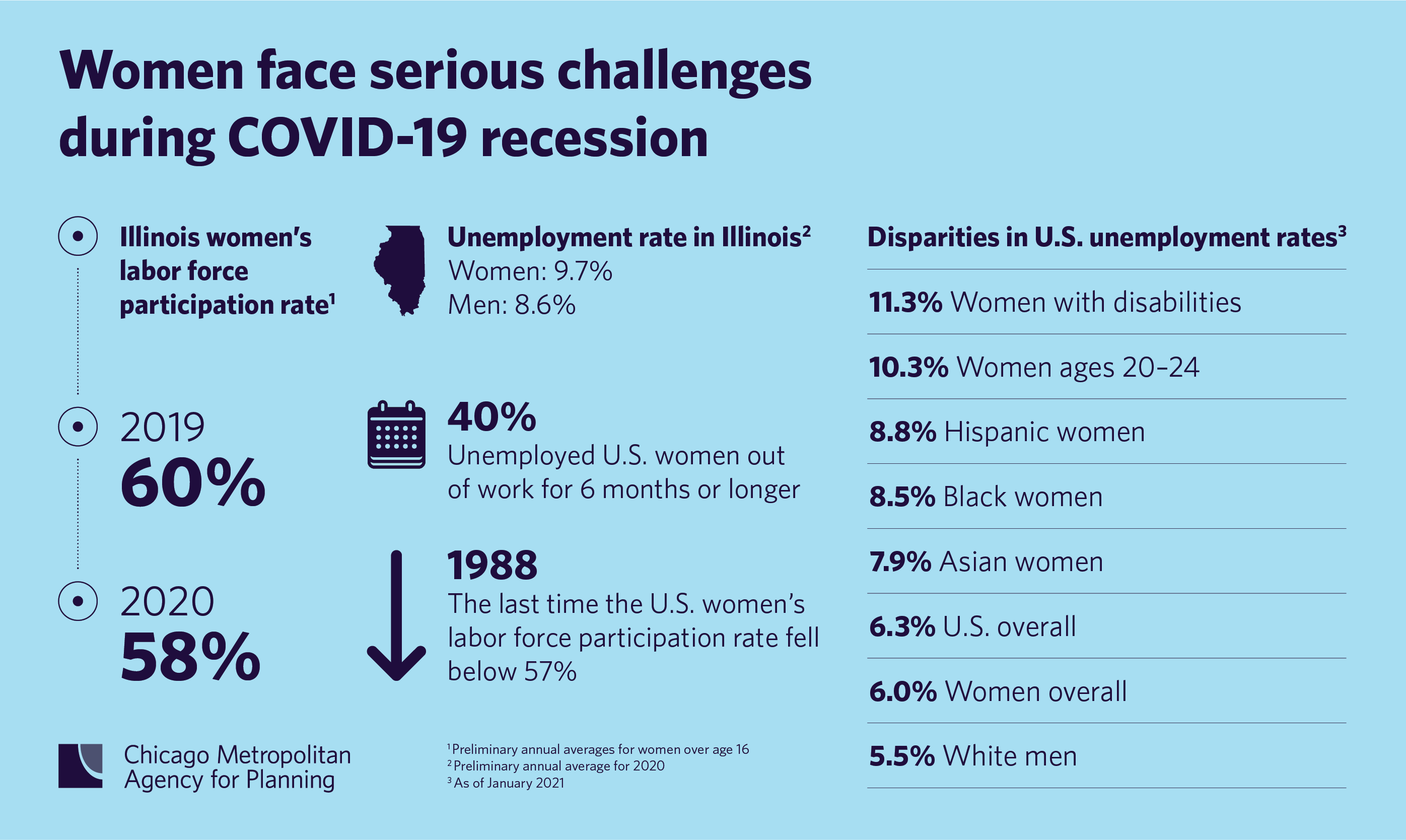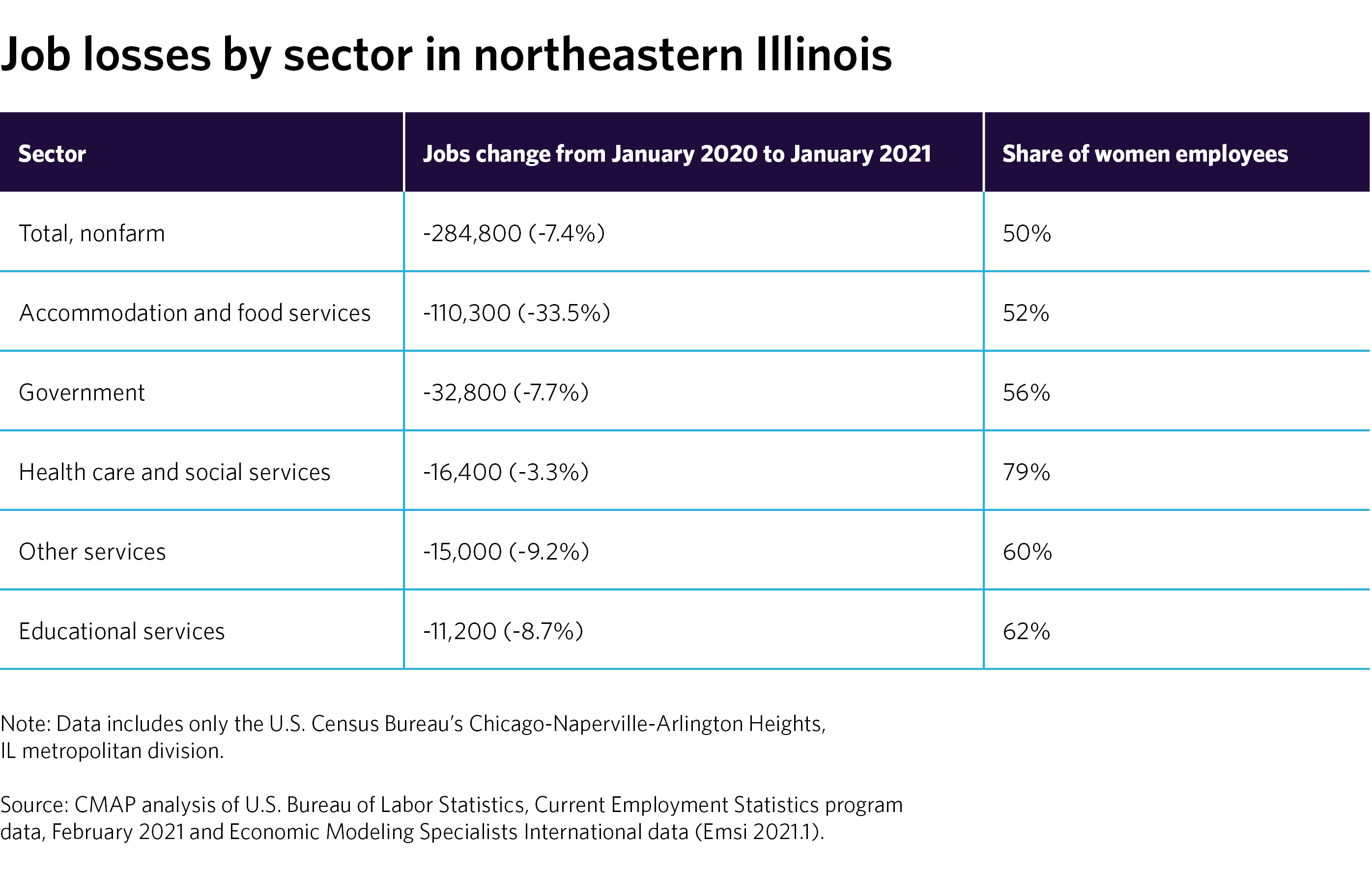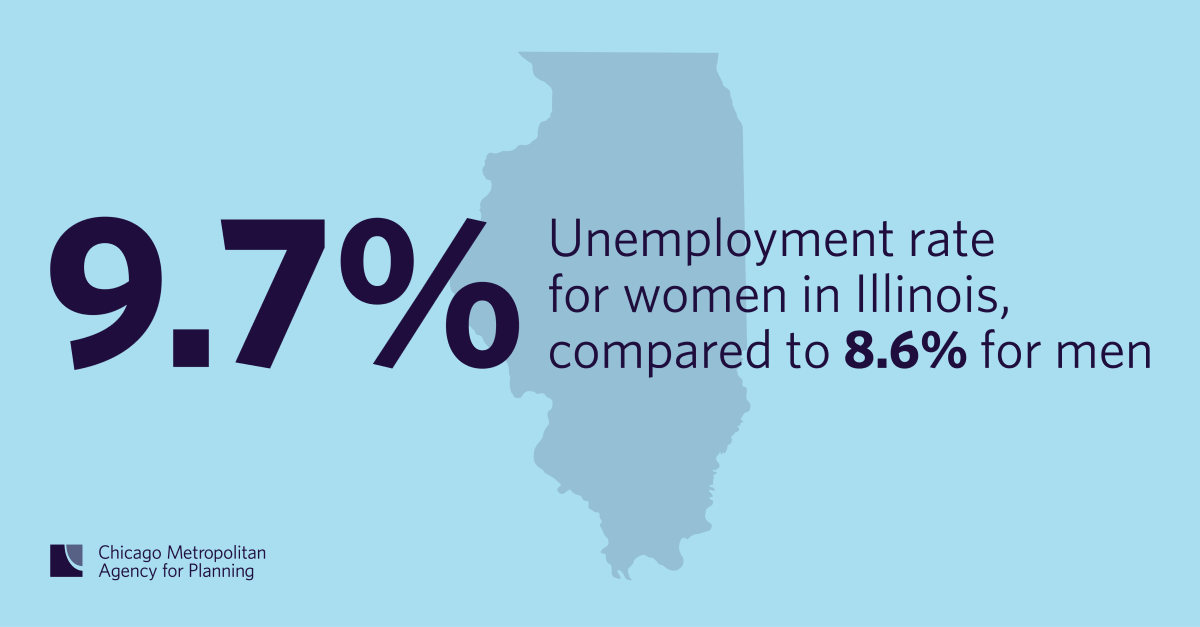Women, particularly women of color, have been vulnerable to the economic impacts of COVID-19. In Illinois and across the nation, women have become unemployed or dropped out of the workforce at higher rates than men over the past year.
Understanding the factors at play — including structural inequities, gendered imbalances in family care, and steep job losses in service industries — is critical to developing strategies for a more equitable recovery.
Labor force participation at 33-year low
As of January 2021, more than 2.3 million women had left the U.S. labor force since the start of the pandemic, compared to 1.8 million men. As a result, women’s labor force participation rate — the percentage of women who are either working or looking for work — fell to 57 percent. This is the lowest level since 1988.
Preliminary annual averages for Illinois suggest a similar trend. In 2019, nearly 60 percent of women over age 16 were either working or looking for work. As the pandemic limited opportunities to work in 2020, the labor force participation rate for Illinois women declined to 58.1 percent.
One critical factor is the gender imbalance in household work. A recent report from the Federal Reserve Bank of Chicago found that women with children suffered greater job losses throughout 2020 than other groups, including fathers and women without kids.
Women of color also have been disproportionally affected. In January 2021, there were 4.8 percent fewer Black women in the U.S. labor force than a year earlier — compared with a 3.1 percent drop among white women and 2.4 percent decrease among white men.

Higher unemployment rates
Illinois’ average unemployment rate in 2020 was 9.7 percent for women, compared to 8.6 percent for men, according to current estimates. This would mean nearly a quarter-million fewer women were employed in Illinois on average in 2020 than the year before.
There is significant risk that the crisis will damage women’s economic security if they are unable to return to full-time work. About 40 percent of unemployed women nationally in January 2021 had been out of work for six months or longer — in many cases exhausting available state and federal assistance.
Deeper disparities among mothers, women of color, and women with disabilities
The COVID-19 recession has been particularly detrimental to those who live and work at the intersections of disadvantaged identities, including women of color, mothers, and those with disabilities. The Federal Reserve Bank of Chicago’s analysis found the decline in women who are working or looking for work was steepest among Black mothers, single mothers, and non-college-educated mothers.
National unemployment rates in January 2021 show sharp disparities:
-
Women with disabilities: 11.3 percent
-
Women ages 20-24: 10.3 percent
-
Hispanic women: 8.8 percent
-
Black women: 8.5 percent
-
Asian women: 7.9 percent
-
U.S. average: 6.3 percent
-
Women overall: 6.0 percent
-
White men: 5.5 percent
Steep job losses in women-dominated fields
Job losses during the pandemic have mounted in industries where women are employed at higher rates. About one in three working women were employed in teaching, nursing, clerical work, retail sales and customer service, and food services in 2018. Even within particular industries and occupations, women are over-represented in roles that saw larger cuts, such as housekeepers and cashiers. Beyond recent trends, jobs in industries like retail or hospitality and leisure may lack important safety nets that can offset the impact of an economic downturn.
In northeastern Illinois, sectors with large shares of women employees have recovered some jobs but remain below their pre-pandemic levels:

The Chicago Metropolitan Agency for Planning (CMAP) will host a roundtable discussion to explore how COVID-19 has exacerbated economic challenges for women and how to address those disparities in northeastern Illinois.
Join the discussion on International Women’s Day, Monday, March 8, at 11:00 a.m. Panelists include U.S. Congresswoman Lauren Underwood; Dr. Helene Gayle, president and CEO at The Chicago Community Trust; Karen Freeman-Wilson, president at The Chicago Urban League; and Noreen Sugrue, director of research at The Latino Policy Forum, with CMAP Executive Director Erin Aleman moderating the discussion.
